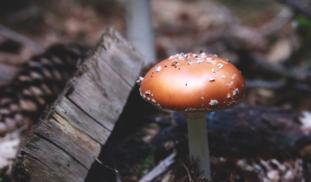Please wait...
About This Project
Mycorrhizal communities are a fundamental mutualistic interaction between soil fungi and trees. However, the interaction between soil bacteria and mycorrhizal fungi is vastly unknown. Since these microorganisms have fundamental roles in carbon and nitrogen fixation, we would implement a biosensor device to assess the spatiotemporal distribution of mycorrhizal-bacterial species and how their diversity and abundance affect trees grown in challenging environments.

Browse Other Projects on Experiment
Related Projects
How do polar bears stay healthy on the world's worst diet?
Polar bears survive almost entirely on seal fat. Yet unlike humans who eat high-fat diets, polar bears never...
Uncovering hidden insect diversity associated with a likely undescribed gall-forming midge
Does a likely undescribed species of gall-forming midge (pers. comm. Ray Gagné) on Eriodictyon plants (Yerba...
Macrofungi of the California archipelago
The eight islands of the California Archipelago are a well-studied biodiversity hotspot — but we know almost...





